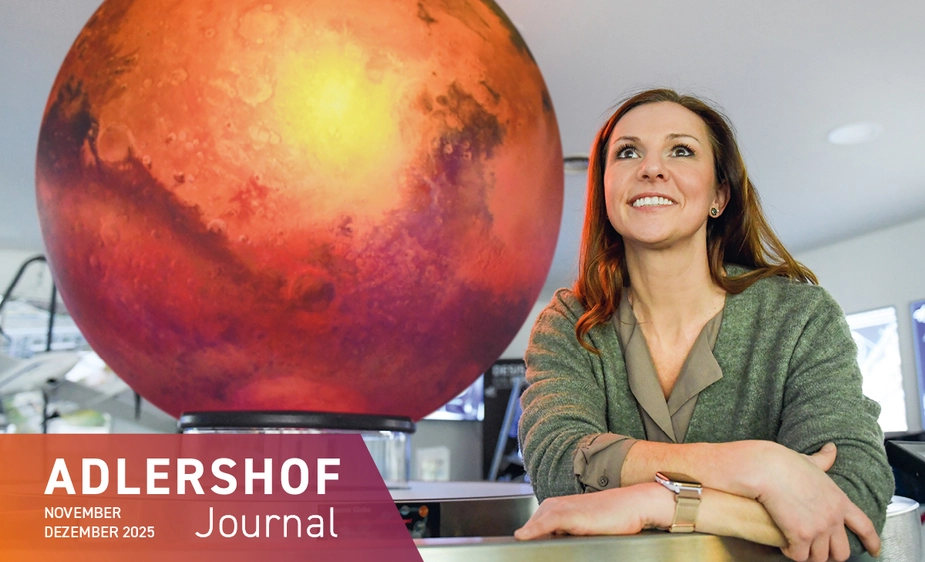Mars in 3D
Using a special camera developed in Adlershof, planetary geologist Daniela Tirsch and her team are mapping planet Mars
For more than 20 years, the Mars Express probe of the European Space Agency (ESA) has been studying the surface and atmosphere of Mars. On board is Germany’s most significant contribution to the mission: the High Resolution Stereo Camera (HRSC), which was developed at what is now the Institute of Space Research of the German Aerospace Center (DLR) in Adlershof.
Weighing 20 kilograms, the camera has the unique ability to scan the Martian surface in up to nine different angles and wavelengths during each observation. This enables the team, led by chief scientist Daniela Tirsch, to create colour, three-dimensional images of the most Earth-like planet in our solar system with such detail that even boulders the size of a garage can be made out.
Late last year, the DLR team published the HRSC Cloud Atlas, a comprehensive database of images of Martian clouds—an important resource for planetary research. Since the Martian atmosphere is “incredibly thin and very cold”, its clouds consist of water and CO₂ ice. Some contain considerable amounts of dust, making dust storms a frequent weather phenomenon—“something we are thankfully spared on Earth”, says Tirsch. Every five to seven Earth years, these storms intensify into planet-wide events. While the causes remain unclear, they have become somewhat part of the folklore within the research team. In November 2024, everyone involved in the mission celebrated the start of a new Martian year with a joint New Year’s Eve dinner party in Paris—including bets on when the next global dust storm will engulf the planet.
The work of the HRSC team is fundamental research, yet it has very practical implications. “Before we send humans to Mars, we need to know as much about it as possible. Climate observation is essential. By doing this, we prepare for missions that will determine whether microbial life once existed on Mars, but nobody is talking about higher life forms here.” She views sensational claims of imminent Mars colonisation, such as those made by Elon Musk, with some scepticism. She does not expect smaller research stations before the second half of this century. And only if investment into Mars research endures.
When asked about her working environment in Adlershof, her enthusiasm is unmistakable: “We’re in excellent company here—that’s something I’m proud to say. So many smart minds.” Tirsch first came to Adlershof in 2005 as a doctoral student and has remained closely connected to the technology park ever since: “I’ve witnessed a stunning development. It used to be ‘off the beaten track’, but now we have many restaurants, good transport connections, and a wealth of exciting companies and research institutions.”
Another part of her work also fills her with pride: As one of six members of a committee of the International Astronomical Union (IAU), she helps decide how surface features on Mars are named. A 2023 study found that only 1.8 percent of these structures are named after women—a fact Tirsch would like to change. “Martian craters larger than 50 kilometres are named after people who have contributed to Mars research, for example. There’s definitely room for improvement when it comes to women’s names.” In this way, the planetary geologist is not only advancing our understanding our closest neighbour—but also raising the visibility of its woman explorers.
Simon Wolff for Adlershof Journal
